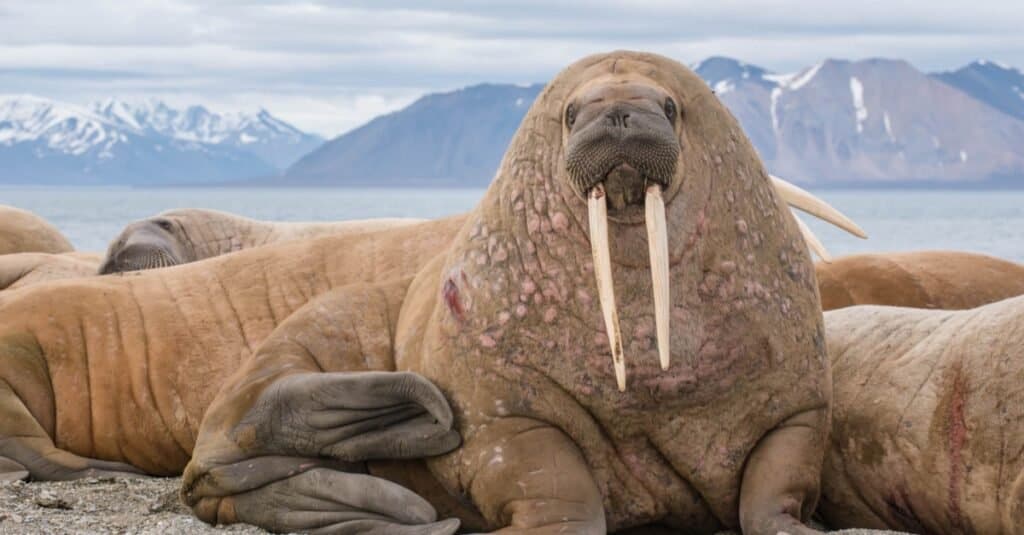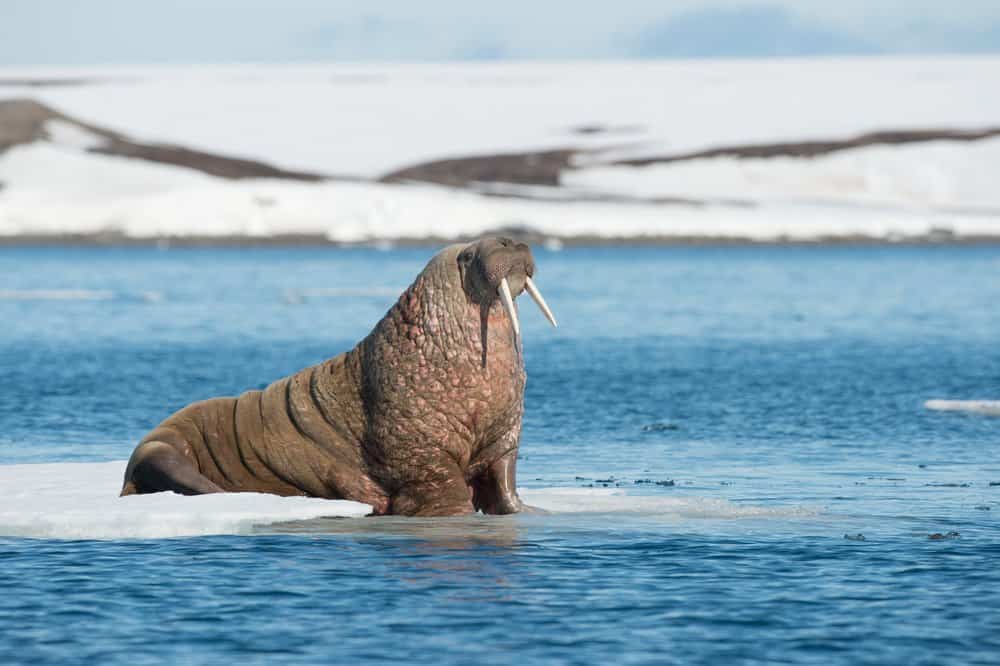There are two subspecies of walrus; the Atlantic walrus and the Pacific walrus. The Pacific walrus is native to the Bering, Chukchi, Laptev, and East Siberian Seas. They are large and unique animals, which means it was a big deal when the largest Pacific walrus ever caught in Alaska broke records. This animal uses sea ice for resting.
Although Pacific walruses are protected under the 1972 Marine Mammals Protection Act, some large walrus tusks have been found. According to the 1972 Marine Mammals Protection Act, it’s illegal to harass or take a marine mammal. It’s also illegal to transport a marine mammal or a marine mammal product into the United States without a permit. However, there are some exceptions. For example, Alaskan natives can harvest marine mammals and create handicrafts from the animals. The harvest cannot be wasteful.
So, what is the largest Pacific Walrus ever caught in Alaska? Continue reading to find out.
The Largest Pacific Walrus Ever Caught in Alaska
The largest Pacific walrus ever found in Alaska scored 147-4/8 points, earning B&C’s Pacific walrus world record. Ralph Young, in 1997, was walking along the shores of Bristol Bay, Alaska after a large storm brought in debris. He spotted the massive tusks and used an axe to remove them from the sand. Afterward, he brought the tusks to the Alaska Department of Fish and Game and had them sealed and registered. His friend joined him in excitement. It took four hours for the two to boil the skull and tusks to remove them for weighing. The large tusks measure 36 inches long and about 10 inches around at each base.

©Mikhail Cheremkin/Shutterstock.com
About the Pacific Walrus
The Pacific walrus is one of two subspecies of walrus. They live about 20 to 30 years in the wild. These large animals migrate between the ice and the beach in late spring and summer. They are best seen in Alaska and Russia.
Size and Appearance
Pacific walruses are very big. For example, a male Pacific walrus can weigh between 1,800 and 3,700 pounds. However, they can reach up to 4,000 pounds. Although rare, some Pacific walruses surpassed 4,000 pounds. Their hides are about 20% of their body weight. In 1909, a large walrus hide weighed 1,100 pounds, meaning its body weight was at least 5,000 pounds. The females are typically smaller than the males and weigh around 1,800 pounds. They typically measure 7 feet and 3 inches to 11 feet 10 inches. Newborn walruses are born heavy, weighing about 73 to 187 pounds.
These animals aren’t just impressive for their weight, but also their appearance. Pacific walruses have long tusks. Their long tusks are elongated canines. These long tusks can reach 3 feet long and weigh up to 12 pounds. Around the tusks are mystacial vibrissae. This makes Pacific walruses look whiskered. Every walrus has a different amount, but generally, they have 400 to 700 vibrissae in 13 to 15 rows.
These walruses also have thick skin with little-to-no fur. Their skin is wrinkled with about 4 inches around their necks. Pacific walruses change color as they age. The younger a Pacific walrus, the darker its skin. However, as they age, they become cinnamon-colored. Old males become pink with age.
Diet
Most walruses prefer shallow shelf regions. They forage for food on the sea floor while on top of a sea ice platform. Pacific walruses are opportunistic hunters. They aren’t picky and eat over 60 genera of marine organisms. Some more common animals in their diet include shrimp, crabs, snails, squid, octopus, and some species of fish. They also consume coral and sea cucumbers.
While Pacific walruses have a large diet, about 97% of what they eat are benthic invertebrates. Although not as common, some Pacific walruses prey on small bearded seals. While the Brünnich’s guillemot is not a large part of their diet, Pacific walruses have been documented eating it. Some unofficial reports also state that Pacific walruses eat whale carcasses and ice-entrapped narwhals. However, no evidence can prove this.
Predators
Pacific walruses don’t have many enemies. They only have two natural predators, the orca whale, and the polar bear. Although orca whales and polar bears are aggressive hunters, pacific walruses don’t make up a large part of their diet. Instead, orca whales and polar bears mainly prey on young and vulnerable walruses.
Typically, when a polar bear attacks a Pacific walrus, it’s because the walrus has been crushed or wounded. Still, walruses put up a big fight with their tusks, and the battles last long, sometimes ending in the polar bear’s death or retreat.
Orca whales are stronger than Pacific walruses in the water, but walruses can successfully defend themselves. American and European hunters were also massive predators that wiped out many Pacific and Atlantic walruses. Now, Pacific walruses are protected and conservation efforts are underway.

©Inge Jansen/Shutterstock.com
Up Next
- You Can Help Scientists Spot Walruses From Space!
- The Extinct Walrus: How Vikings Hunted a Walrus to Extinction
- Manatee Vs Walrus: What Are the Differences?
- What Do Walruses Eat? 14 Foods in Their Diet
The post Discover The Largest Pacific Walrus Ever Caught in Alaska appeared first on AZ Animals.
from Animal News, Facts, Rankings, and More! - AZ Animals https://ift.tt/dauQXxs